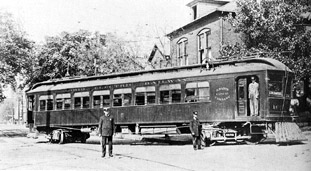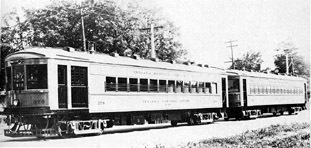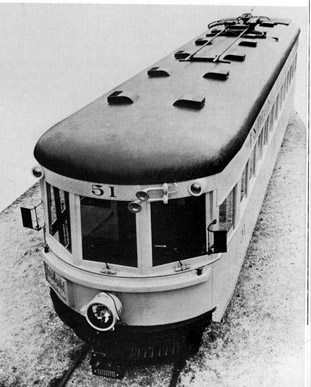
The Interurban in the Midwest




Primary emphasis on passenger service?: Yes
Heavier and faster equipment than streetcars?: Yes
Operation on streets in cities, sides of highways or private rights-of-way in rural areas? Yes
The Midwest was an especially fruitful area for the interurban. Cities there were (and still are) spread out over hundreds of miles. The areas between the cities were not densely populated, but there were few vacant spaces. There were communities of varying sizes at regular intervals, and most of the acreage between communities was dedicated to prosperous farming. In short, a citizen in the most remote area had the financial means to travel to "the city" if the infrastructure existed.
In addition, the landscape was very flat and there were no large bodies of water. There were no physical obstacles. All of this encouraged and allowed a vast network of interurban rail to exist, especially across Indiana and Ohio. Whereas the limitations of the New England infrastructure encouraged little car evolution, speed and occupancy became a premium in the Midwest. Straight tracks with little gradient begged for high-speed cars. With high-speed cars connecting far-flung towns, distances could be comprehended in terms of time. Regional differences become less important, since other more densely populated areas such as New England were connected with slower cars.
The Heartland boasted the four states with the most interurban track mileage. In order: Ohio, Indiana, Michigan, and Illinois (Middleton 140) were laced with track. Ohio and Indiana were most interesting because they were the two leaders and their systems were interconnected. Sleeper cars made overnight trips between Indianapolis and Columbus. Ohio's Lake Shore Electric and Indiana's Terre Haute Indianapolis & Eastern Traction Company and The Union Traction Company were among the largest and strongest interurban companies in the nation. The impressive structure on the left is the Indianapolis Traction Terminal. Opened downtown in 1904, it was said to be the largest terminal of its kind in the world.(Leary 106)
The first of these interurban lines began operation in 1893. With spurts of new construction in 1903, 1906, and 1907, the system was pretty well established by 1908. Competition favored other forms of transportation. After almost two decades of steady growth and improvement of equipment, many lines were operating at a deficit by 1925. The major lines had all dissolved by 1938, and by the start of World War II the interurbans of the Midwest were all essentially dead.